Meet Our Researchers
Meet Moogsoft's AIOps researchers, responsible for authoring 50+ patents for original algorithms, such as Vertex Entropy, Tempus, Cookbook and Probable Root Cause.
Meet Our Researchers
Moogsoft Leadership
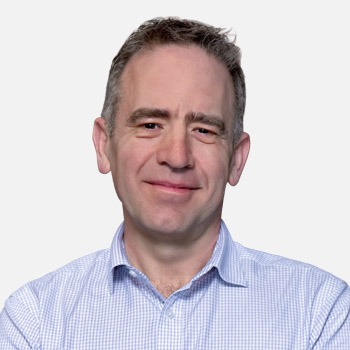
Rob Harper
Chief Science Officer, Moogsoft
Publications LinkedInRob Harper is the Chief Science Officer and VP of Engineering – Advanced Algorithms at Moogsoft. Rob joined Moogsoft as the founding member of its engineering team in 2012 and led that team until late 2016 when he took up his current role. Rob graduated from London’s Imperial College with a BEng in Mechanical Engineering and a PhD in Computational Fluid Dynamics. After a brief period as a fluid dynamics consultant, researching the use of numerical techniques for investigating the effects of gas explosions, Rob made the transition to Network and Operations Management. He joined Riversoft in the late 1990s architecting the Riversoft/NMOS product, which later became the core component of IBM Tivoli Network Manager. Throughout his career, Rob has had a variety of senior development and managerial roles in technology start-ups. Immediately prior to joining Moogsoft, Rob was the founder and CTO of Jabbit, an Internet Information Services provider.
Rob’s research interests can be best described as ‘varied’ but with a common theme – that of having an application to network science and fault localization. His main fields of interest are:
- the application of supervised and unsupervised machine learning techniques to Natural Language Processing and Anomaly Detection;
- the study of Complex Networks;
- and most recently the geometrical representation of data.
In the field of Complex Networks, dynamic networks and diffusion processes over complex networks are of particular interest. He has active research collaborations with the University of Sussex and Queen Mary University of London.
INSPIRATIONAs a child Rob was fascinated by all things mechanical and had an incredible desire to understand how things worked. Much to his parents frustration, he’d often take things apart; usually (but not always) managing to put them back together; and sometimes there’d be no parts left over! His interest in programming and computing grew very quickly thanks to his first “home computer”. Coupling that with his mechanical intrigue and a love of math and physics meant studying mechanical engineering at the university, followed by a PhD in numerical analysis in the form of Computation Fluid Dynamics, which seemed to be the perfect mix.
There are countless inspirations throughout life but Rob feels particular admiration for the early pioneers of scientific study and the computing industry. Polymaths such as George Stokes, a great physicist and mathematician of the 1800s who gave his name to one of today’s grand challenges, the Navier-Stokes equations, which are still unsolved and still at the heart of fluid dynamics research. Charles Babage, Ada Lovelace, Alan Turing — a small number of names from a very long list of inspirations, but people without whom today’s IT industry may not even exist. Pioneers such as these made huge conceptual leaps, many of them at a time before the electric light bulb had even been invented.
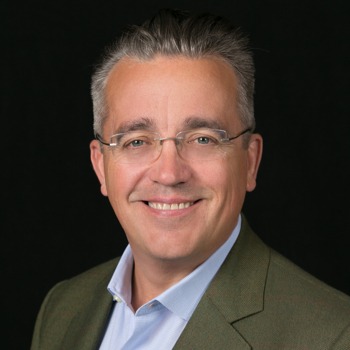
Phil Tee
CEO, Moogsoft
Publications LinkedInPhil Tee is Chairman and CEO of Moogsoft. He made an indelible mark in information technology by co-founding Omnibus Transport Technologies Limited (OTT) in 1993 to build and market Netcool/Omnibus. OTT was folded into Micromuse (Nasdaq: MUSE) in 1994 and Netcool/Omnibus became the company’s flagship product. This technology continues to be the in the core of the management support systems in the world’s largest networks in the form of IBM Tivoli Netcool. In 1997, Phil founded Riversoft (LSE: RSFT) to solve the problem of root cause analysis; the technology acquired by Micromuse and the software subsequently became part of the IBM Tivoli Netcool suite. Phil then went on to lead Njini, producing a revolutionary and early data and storage software layer with data de-duplication and information lifecycle management (ILM) capabilities. The company’s technology was acquired by Riverbed (Nasdaq:RVBD). In 2008, Phil founded Promethyan to gestate multiple startups concurrently. Two Promethyan children of note include Prelert and RiverMuse.
My current areas of research encompass many different practical applications of mathematical physics sharing the common thread of dynamical graph models of real-world processes. I apply contemporary techniques of network science and mathematical physics those approaches to the problems of fault localization, machine learning and language analysis, high order structure in cancer genetics and fundamental questions in theoretical physics particularly the extreme high energy nature of space time and emergent geometry. I maintain active research collaborations across many institutions internationally but in particular, I am on the adjunct faculty of Arizona State University Beyond Center and visit regularly at the University of Sussex. Right now, I am particularly focused on questions concerning quantum graph models of emergent geometry and the topology of machine data.
INSPIRATIONMy father was an electrician, and my childhood toys consisted of motors, wires, magnets and other electrical odds and ends with which I used to make all kinds of fun constructions. Later on, as I progressed through school, I remember very distinctly the moment that I fell head over heels in love with calculus. Ever since that day, I have been in awe of the incredible leaps of genius that have decorated the human journey to date and too many names to mention have influenced and inspired my love of all things scientific. Today, we all face challenges that threaten the future well-being and prosperity of the human race and the planet upon which we live. I have long been convinced that the drive towards a thinking computer is a necessary step for the human race to prosper in the next thousand years. To be very clear, if Albert Einstein were alive today, I am convinced that he would be an Information Scientist!
Academic Collaborators
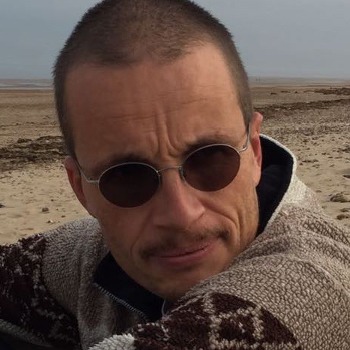
Luc Berthouze
Professor of Complex Systems, University of Sussex
PublicationsLuc Berthouze trained in applied mathematics in the French Grandes Ecoles system and received his PhD from the University of Evry Val d’Essonne in 1996. He then joined the Electrotechnical Laboratory (ETL) in Japan, as a research scientist. In 2000, he became a senior research scientist with the Neuroscience Research Institute of Japan’s National Institute of Advanced Industrial Science and Technology, better known as AIST. After a sabbatical in the Department of Physiology at University College London (UK) in 2006, he joined the faculty of the Department of Informatics of University of Sussex (UK), where he is now a Professor of Complex Systems. He holds an honorary appointment at the University College London’s Great Ormond Street Hospital (GOSH) Institute of Child Health in London.
Luc Berthouze’s work lies at the intersection of mathematics (dynamical systems, random processes, graph/network theory), engineering (control theory, signal processing, robotics) and neurophysiology (EEG, EMG, MEG, kinematics). Some of his most recent research focuses on analysing systems operating at/near a critical transition with application to neuroscience and epidemiology. He is funded by various bodies including the Leverhulme Trust, InnovateUK, and industrial partners.
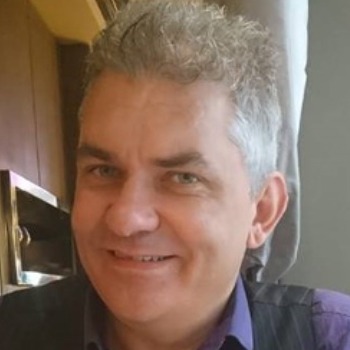
Richard Clegg
Lecturer, Queen Mary University of London
Dr. Clegg is a lecturer at Queen Mary University of London and an Honorary Senior Research Fellow at University College London. His PhD is in Mathematics and Statistics from the University of York and the title of his dissertation is “The Statistics of Dynamic Networks.” His research interests are centered on the study of networks but in a very broad sense, having studied, for example, road transport networks, computer networks, social networks, authorship networks amongst others.
When not working, he is an amateur Scuba instructor and has dived many famous sites including the Galapagos Islands, the Komodo National Park in Indonesia, the Namena Marine Reserve in Fiji, and the German High Seas Fleet wrecks of Scapa Flow in the Orkney Islands.
In complex networks his main interest is in capturing models that explain the underlying development of networks in a statistical or probabilistic way. The Barabási–Albert model is one simple way that we understand how networks evolve. However, this fails to capture many of the features of real-world network data sets. His work looks at more complex models that can be derived by mixing different evolution models together and changing those mixtures over time. The FETA software, which he created, can be used to investigate these dynamic mixture models.
He is interested in tools for statistical analysis of graphs and has been developing the “Raphtory” system. This is a system that allows the analysis of big data graph systems while maintaining the entire history of the graph. It is capable of analyses impossible in current generation graph systems.
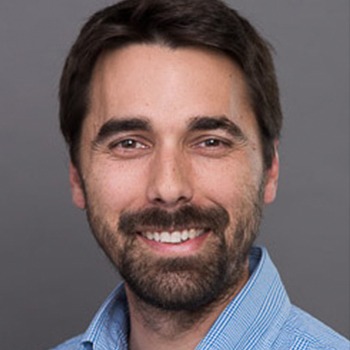
Justin Coon
Associate Professor of Engineering Science, Oxford University
PublicationsDr. Coon has worked in the field of communications and networks for 20 years. He spent a decade in industrial research labs (HP Labs and Toshiba Research Europe Ltd) before moving back to academia full time. He is currently an Associate Professor in the Department of Engineering Science at Oxford University and the Emmott Fellow in Engineering at Oriel College where he teaches various aspects of mathematics, electricity and electronics, control, semiconductor physics, and communication theory and system design.
Dr Coon’s research interests include communication techniques and analysis, network theory, random graphs, quantum networks and sensing, and error correction for storage and communication channels. He is also a regular consultant to industry.
One of Dr Coon’s latest projects is Probabilistic Tomography of Wireless Networks (ProTo-Net), funded by the EPSRC and led by Oxford University. ProTo-Net is aimed at developing optimal methods of actively discovering or passively inferring network topologies and structures in wireless communication systems and other spatial networks. The project methodology will draw on the formalism of information theory to explore the maximum compressibility of spatial graphs and to exploit this notion to develop efficient ways of performing network tomography.

George Parisis
Senior Lecturer, University of Sussex
PublicationsDr. Parisis is a Senior Lecturer in Computer Science at the University of Sussex. He has a BSc in Computer Science, MSc in Information Systems and PhD in Computer Science from the Department of Informatics, Athens University of Economics and Business. Before joining the University of Sussex, he was a Research Fellow at the Computer Laboratory, University of Cambridge, where he did research on information-centric networks and on the integration of RaptorQ codes with data centre transport protocols.
Currently, his research interests lie at the intersection of computer networks (next-generation networks and management), machine learning (network protocols with reinforcement learning), graph theory (vertex entropy and functional connectivity inference) and information theory (data transport protocols with RaptorQ coding). He is funded by InnovateUK and industrial partners and has published over 35 papers in international, peer-reviewed conferences and journals.
Moogsoft Researchers
Yusufu Shehu
Research Scientist, Moogsoft
Publications LinkedInShehu is a researcher in Moogsoft’s science department in London. He specializes in applications of Natural Language Processing to fault localisation and incident classification on IT infrastructures.
He obtained a Ph.D. in Experimental Particle Physics at the University of Sussex and an MSci in Physics at University College London. During his doctoral research, he worked on the ATLAS experiment, which is one of the largest experiments on the Large Hadron Collider at the European Organization for Nuclear Research (CERN) in Geneva. His research was included in peer-reviewed physics journals and a CERN archived thesis.
As a post-doctoral researcher, he explored applications of particle physics research techniques to big data analysis, effectively bridging the gap between physical and data science. He developed a streaming data analytics platform as part of an entrepreneurial collaboration with the University of Sussex.
His research motivations include the latest language modelling techniques (BERT, GPT-2) and transfer learning (ULMFiT).
Outside of work, he is a competitive national-level powerlifter. He’s also passionate about creative writing and has written several fantasy novels.
Daniel Singh
Research Scientist, Moogsoft
Daniel Singh is a researcher in Moogsoft’s science department in London. He first joined Moogsoft as part of his industrial placement from 2017 to 2018 and soon returned after graduation in 2019, as a permanent research scientist. His current focus is on the use of machine learning for detecting anomalous regions of interest in time series data.
He obtained his degree in computer science from the University of Bath where he undertook various research projects, most notably within the field of computer vision. He achieved chartership from the British Computer Society (BCS) in 2019 for his use of machine learning in face hallucination and image super resolution research projects.
His current research interests are in data science, algorithms and machine learning as well as using data science to make a social impact, particularly in areas like AI for conservation.
PhD Students
Matthew Barnes
Queen Mary University of London
Matt Barnes is a PhD candidate in the Department of Electrical Engineering and Computer Science, Queen Mary University of London. His research focuses on determining the extent to which individual nodes in complex networks influence the trajectory of the collective structure of the network. Initially, Matt applied the widely used measures of equality and mobility from sociology and economics to networks, and recently has built his own influence measures to use in conjunction. Matt achieved an MSci Degree in Physics from University College London in 2016, with a focus on computational quantum mechanics.
Before starting his PhD, he spent three years working in software development for various consulting companies in the UK, ranging from inventory management for UK Defence entities to e-commerce companies. Aside from his academic accomplishments, Matt has always been a committed member of mountaineering societies wherever he finds himself living, and is currently a member of the University of London mountaineering society. He has helped organise many types of mountain-based excursions all over Europe and parts of Africa.
Giles Winchester
University of Sussex
Giles Winchester is a PhD student in the Department of Engineering and Informatics, University of Sussex. His research interests lie in the intersection between neuroscience and computer network management, with a focus on utilizing graph and applied statistical theory for the discovery and analysis of latent relationships within complex networks.
Giles received a BSc (First Class Honours) and MRes (Distinction) in Neuroscience from the University of Sussex. Prior to his PhD, he carried out research projects in computational modelling for the investigation of complex systems and the development of novel signal-processing algorithms for the detection of activity within neuronal systems, yielding authorships on four upcoming academic publications.
